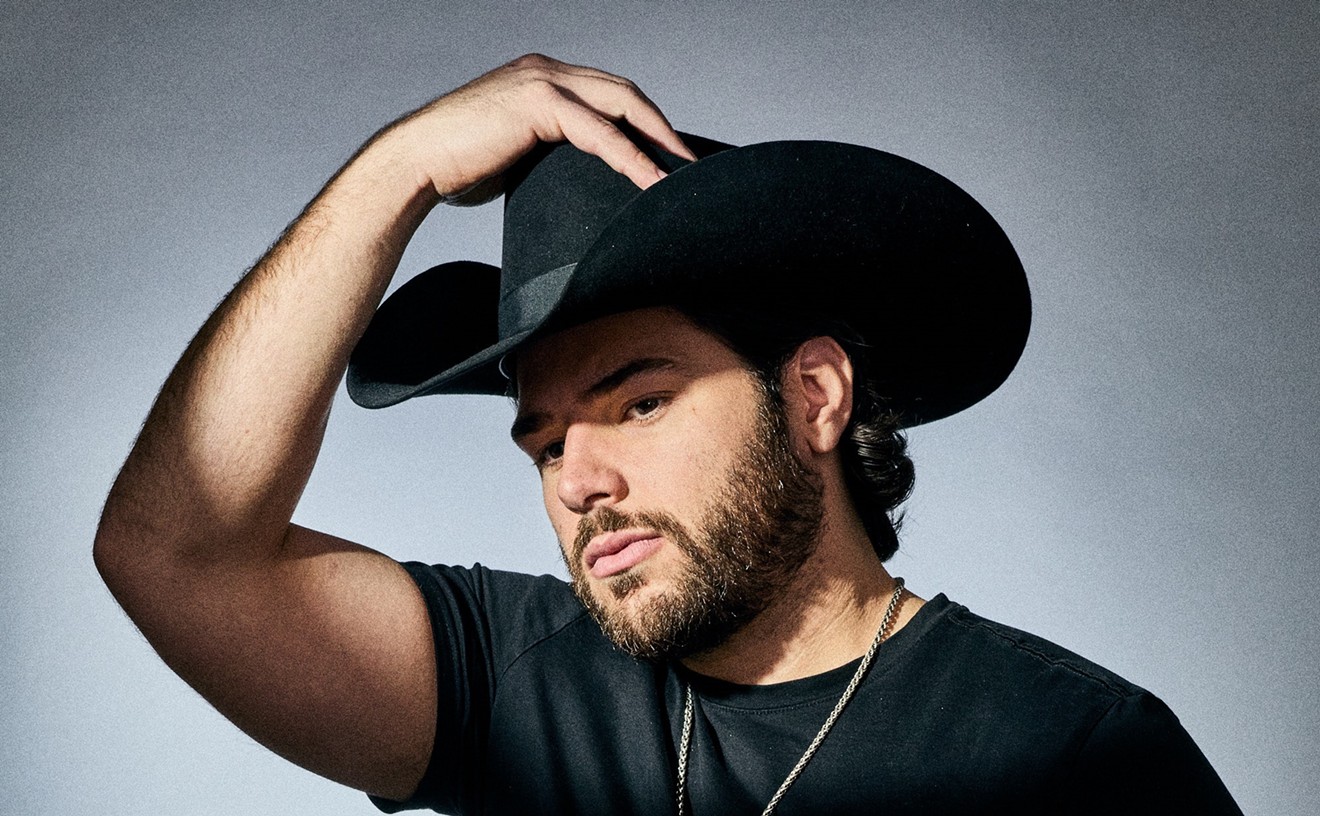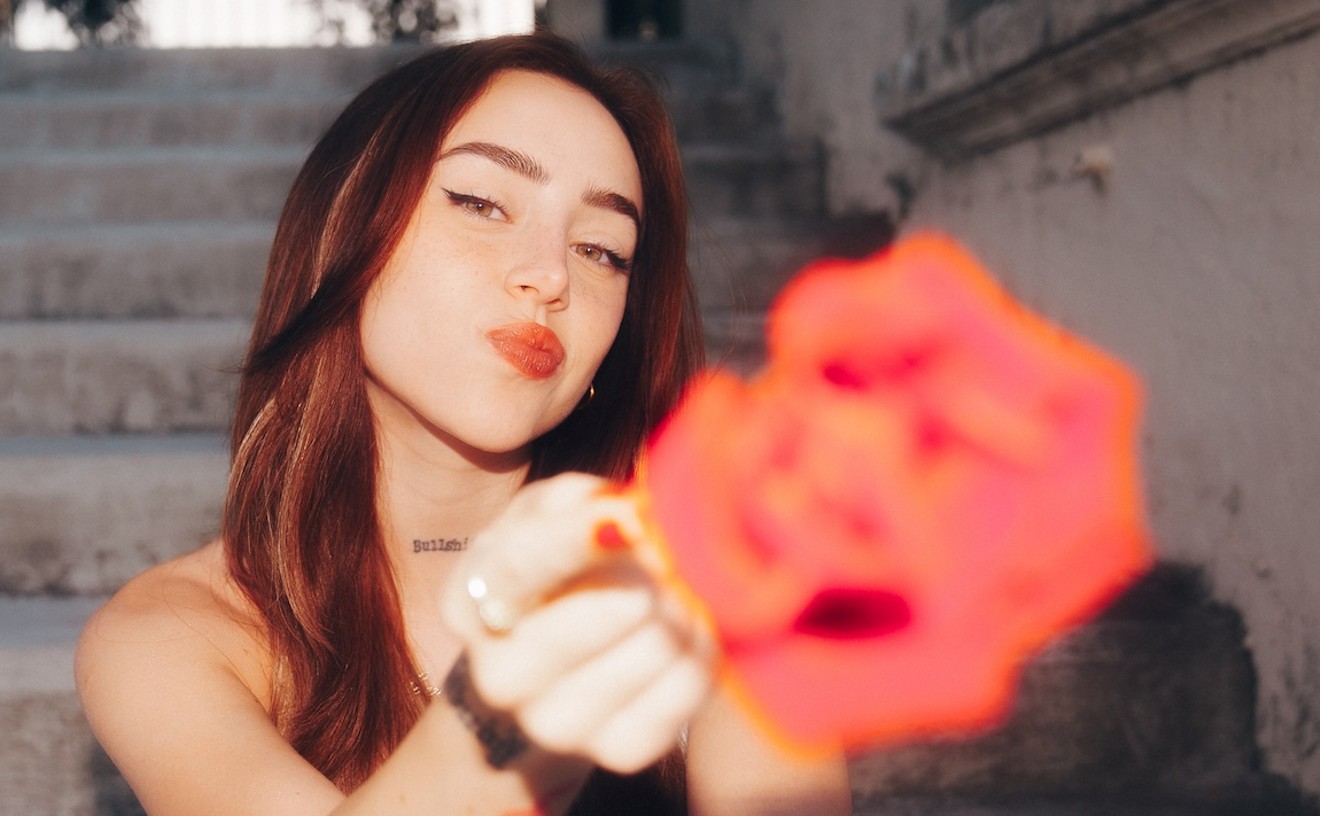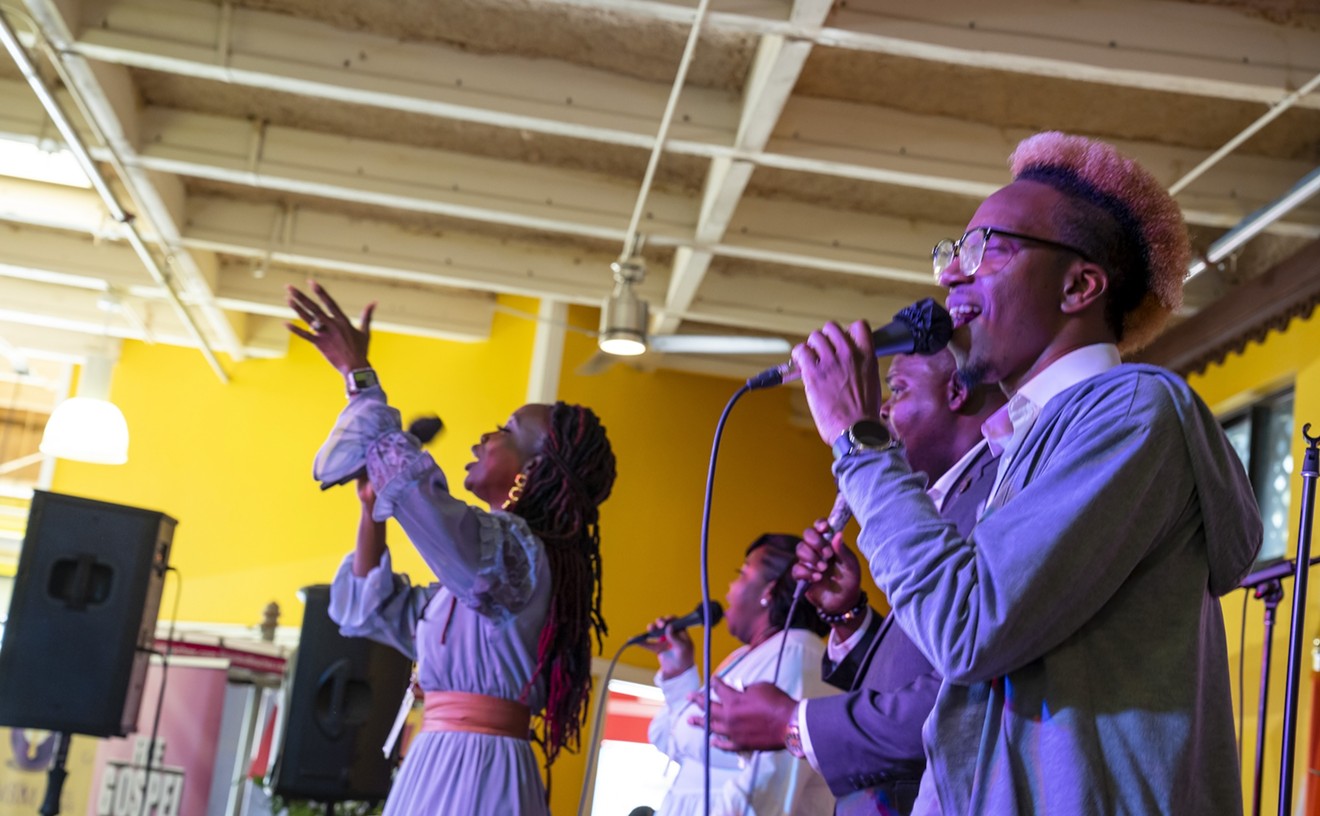Davis grabbed her happiness in bossa nova as have so many of her compatriots, including Don Wilner, musical director at the Van Dyke. Wilner, who also plays bass, has organized not one but two nights of Brazilian jazz there every week. In addition to Davis, Rose Max, a carioca from Rio de Janeiro, performs on Sundays. Contrasting Davis's introspective reserve, Max is grand. She fills the stage and the entire nightclub with her booming vocals and wide open-armed gestures. The notes she hits are precise and the melody expertly articulated, the result of training from her husband-coach Ramatis Morães, who also accompanies her on the acoustic guitar.
Max did not perform bossa nova in Brazil. She took up the laid-back groove when she encountered a receptive audience after moving to Miami seven years ago. Max finds playing for North Americans fulfilling because, she says, "they love the music even if they may not even understand what it is I am saying." The love affair between American audiences and Brazilian jazz began in 1961, when Stan Getz and Dizzy Gillespie formed part of a group of U.S. musicians touring Latin America who were amazed by the suave sounds from Brazil. In 1962 the coolest cats in Manhattan turned out for Jobim and Gilberto's first concert in the United States, held at Carnegie Hall. The success of that event landed the Brazilians major recording deals and enticed a number of big-name stars, including Frank Sinatra, Nat King Cole, and Ella Fitzgerald, to chime in. Even Elvis Presley tipped his pompadour to the Brazilian crooners when he sang "Bossa Nova Baby" in 1963. In 1964 the only song more popular than Getz and Gilberto's "The Girl from Ipanema" was the Beatles' "I Want to Hold Your Hand." Jobim earned a green card from the U.S. government as an "alien of extraordinary ability." Following in his footsteps, bossa nova preservationist Rose Max has the same visa status in the works.
Like the Beatles bossa nova has endured. "Americans like bossa nova because it is familiar," offers Brazilian-American Gina Martell, host of the radio program Braz Jazz, on WTMI-FM (93.1). That familiarity stems from then genre's jazz element: an air of relaxed elegance, unconventional, sometimes discordant harmonies, and an emphasis on improvisation. To the intricate jazz rhythm patterns bossa nova adds steady samba tempos, sultry harmonies, and the sex appeal of lyrics sung in Portuguese. The musicians at the Van Dyke play up the cross-fertilization of North American jazz and Brazilian popular music at times, as when pianist Howie "Jaui" Schneider and bass player Wilner sneak several bars of Duke Ellington's "Take the “A' Train" into a bossa nova standard during Max's set.
Although bossa nova is every bit as North American as it is Brazilian, that dual citizenship is sometimes obscured by the music's exotic South American pedigree. "I love playing with Brazilian musicians because it is more authentic," enthuses Wilner. "I get to take a trip to Brazil once a week." Wilner, however, has never actually traveled to Brazil. There, bossa nova is one rhythm among many in an incredibly diverse soundscape. The Brazilian masses bounce their bunda to rock, hip-hop, and contemporary twists on samba, like the fast-paced pagode or the laid-back forró from the northeast. Popular musicians Caetano Veloso, Marisa Monte, and Djavan all perform MPB (música popular Brasileira), an offshoot of bossa nova and rock with a trademark samba beat. Old-timers Jobim and Gilberto are still cherished, but today's generation is far more interested in the bossa nova trance CDs of Bebel Gilberto than the dusty albums of her father. Which of these musics is more authentic would be hard to say.
Immigration from Brazil has re-created that sonic diversity here in South Florida, with significant communities living in Miami-Dade and Broward. Max suggests that the county line separates the good from the bad. "Here [in Miami-Dade] there are more intellectuals," she argues, "and there is more of an opportunity to do good Brazilian music, like bossa nova."
"Bad" Brazilian music, presumably, would be the pagode, forró, and other contemporary forms that continue to evolve in Brazil without ever winning a North American audience. By distinguishing between the two, Max makes the case for maintaining her repertoire of bossa nova standards.
If bossa nova is now better received in the United States than in Brazil, it should come as no surprise that U.S.-Brazilian collaborations fuel the genre's innovations. On her new CD, Check the Beans, Heather Davis has paired with flautist Jill Russell to recruit the talents of several Brazilian musicians, including percussionist Claudio Slon, who originally played with Jobim; and Jovino Santos Neto, former piano player for Hermeto Pascual. The ensemble has produced a new blend of Brazilian influences and U.S. jazz. "R&B is all funky; jazz gets boring, but it's got a great beat and melody," Davis explains. "Brazilian music makes the bridge between the groove and the melody." On Check the Beans Davis returns to the jazz singing style she practiced for many years before discovering bossa nova in a samba class.
On the opening track, "Only One Day," a song Davis wrote in English, she sings in a low controlled range while the arrangement behind her remixes jazz and samba. Russell trades her flute for a jazzy alto sax here while Slon on drums and Celso Machado on tamborim maintain the background tingle of a steady samba. Pianist Santos Neto modernizes the sound with his electric keyboard. Near the end of the track, Davis's voice recedes, blending the funky understatement of Stevie Wonder with the lullabylike tones of Diana Krall. "Viola Fora de Moda" is a typical baião rhythm from the northeast of Brazil with a duel between piano and flute standing in for the viola battles typical of that folkloric music.
The flute also carries the melody on the title track. The instrumental piece written by Russell vacillates between a contemporary classical composition and a Brazilian forró with an accordion-sounding keyboard, bird calls, and jaw harp. At times Russell is almost tropical, like Nestor Torres. A six-string electric bass adds depth to the otherwise airy harmonies, inspired perhaps by the cello that the Jobim Morelebaum Quartet has added to Tom Jobim's classics. The most complex song on the disc is another baião called "Baião do Porão" ("Basement Baião"). The melody is in three parts: Davis's vocals sound out the notes (there are no lyrics) while Bill Kopper's guitar and Russell's flute follow tightly in unison. Machado adds Brazilian timbre with a quick and steady triangle. The overall feel of the piece is very jazzy, and fans from the Van Dyke can picture Davis's head bopping down and back with each bar. She ends the song dreamily, trailing up as Machado shakes a percussion toy that sounds like rain. In "Balanga Beiço" ("Big-Lipped Black Man"), a duet written by Machado, Davis articulates over the busy instrumental arrangements. Russell adds Latin flair, ending the piece on a high note. Overall Check the Beans sounds bossa nova in texture, jazz in melody.
Davis attributes the folkloric touches on the CD to a desire to branch out from Brazilian standards. "Since getting into bossa nova," she explains, "I like more and more the rootsiness of the northeast, with its different types of grooves." By experimenting with a wide variety of Brazilian music, Check the Beans breaks away from the illusion of a single authentic Brazilian sound. There is happiness in that, too. "The Brazilian musicians love it," Davis says of the fresher fusion, "because it was the opportunity to play something other than “The Girl from Ipanema.'"










